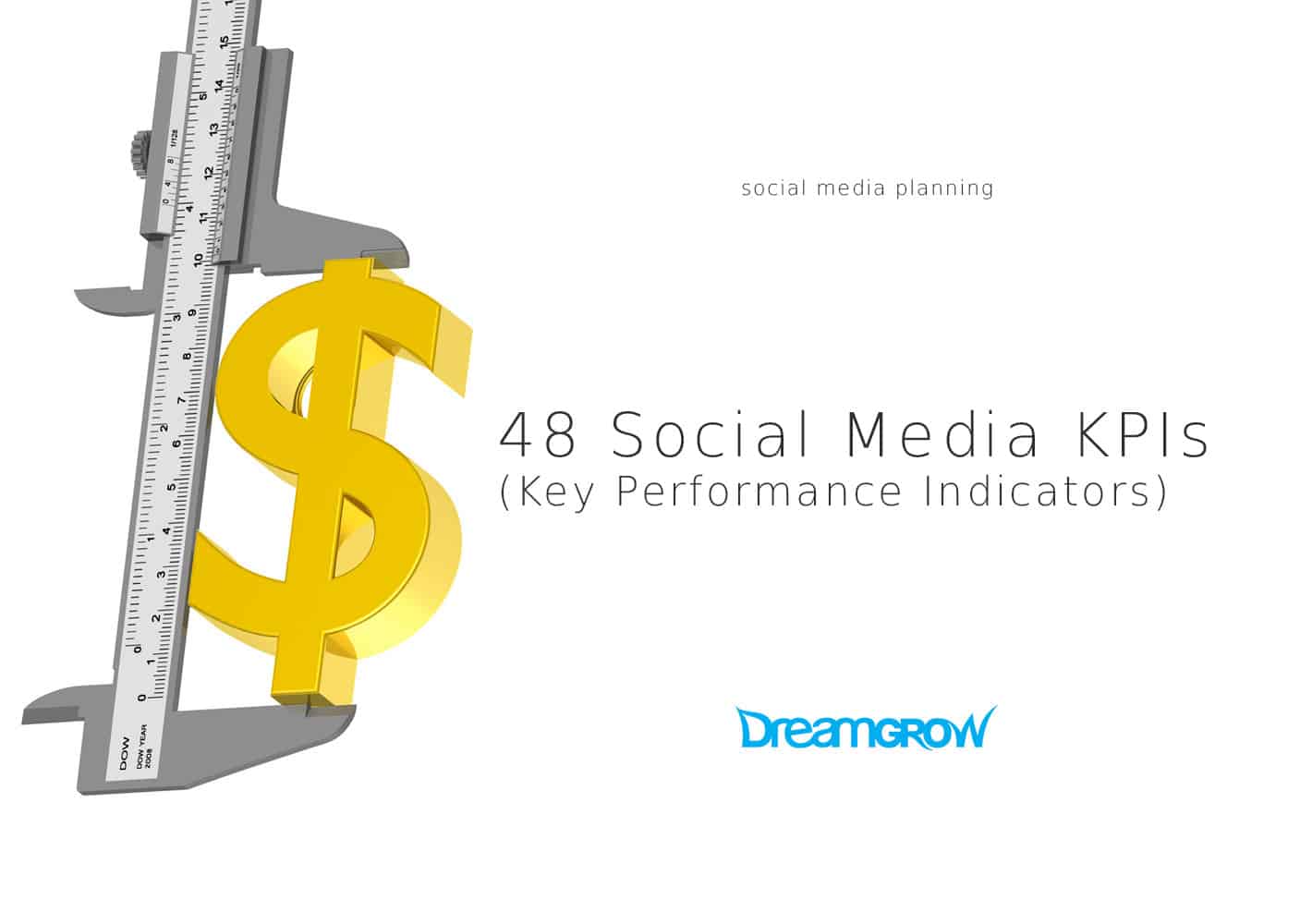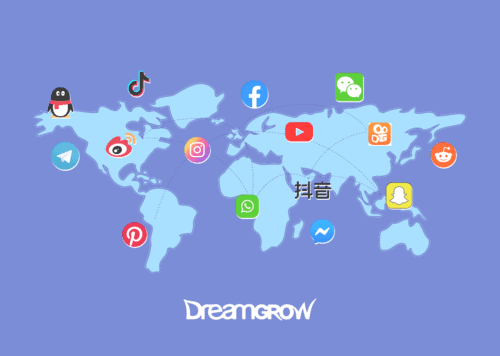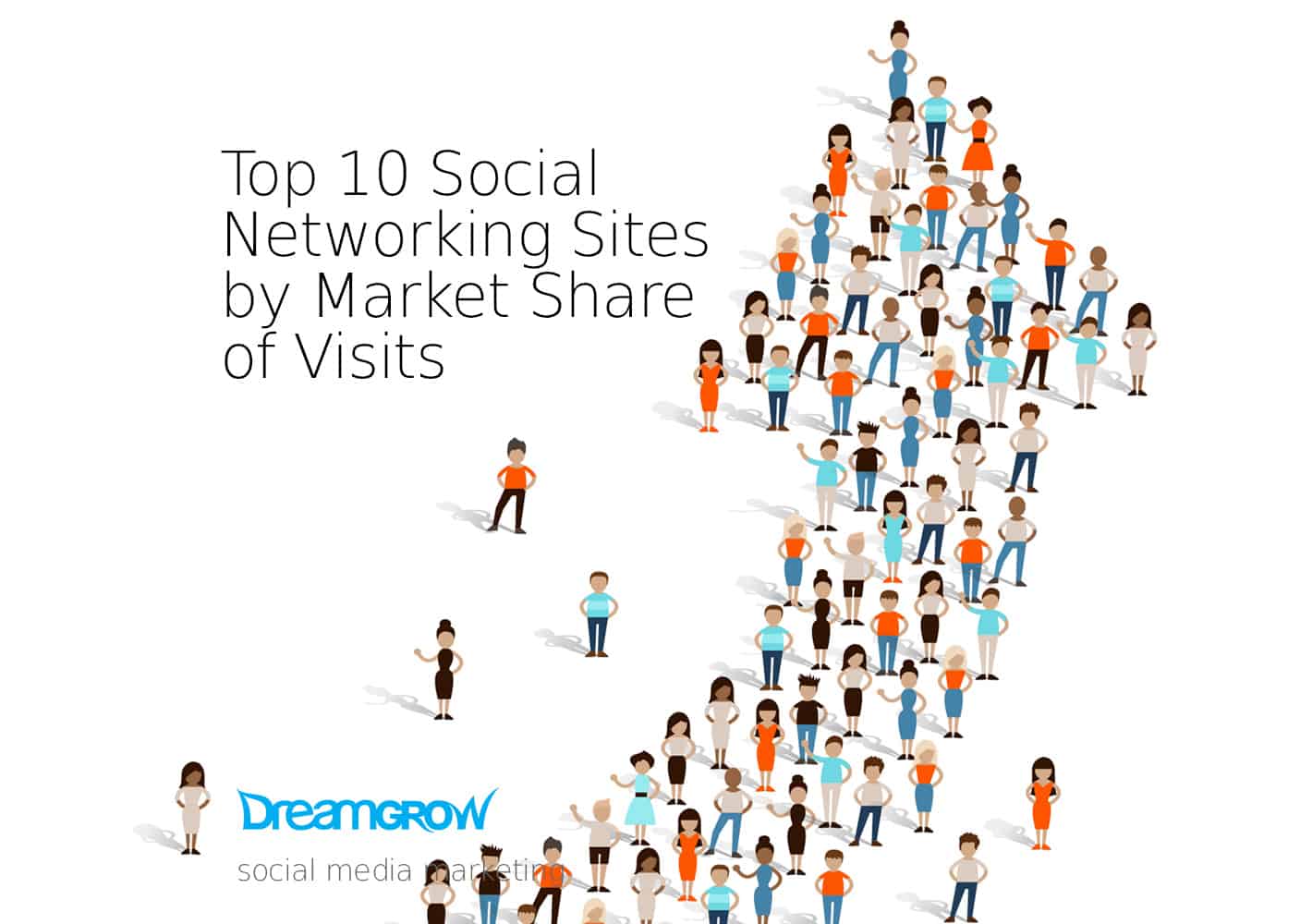There are a lot of things you can measure about your social media efforts. I have compiled a list of 48 social media KPIs (key performance indicators) that you can consider for your specific activities.
One thing to remember is that you should set at least some social media metrics that indicate if you are turning profit. Otherwise, you can reach your social media KPIs and still lose money.
Now, before you begin be sure to set the baseline. Look at the set of your chosen social media KPIs and record the current value. These numbers are important, but the rate of change is the main indicator for most of these social media metrics. For example, it's fantastic if you get 1,000 followers in a day but not so if you get them over the year.
Concentrate on the rate of change of your chosen key performance indicators. You can also express change as a frequency of events. For example, you could measure how many comments you get on Facebook per day, week or month.
You can combine several KPIs into one that is more meaningful for you. Ratios, such as comments per blog post, retweets per followers, help you measure audience activity and engagement.
Reach or Distribution Potential
What social media channels are you using, how can people reach you, are you visible?
Reach metrics are often vanity metrics. Vanity metric means that its relatively easy to pump up the absolute numbers.
For example, you can buy 5,000 followers for $5. But you will get very little interactions and engagement from these 5,000 followers.
These social media KPIs should tell you if you are getting the word out. Is the reach wide enough to justify your budget?
- Fans and followers – a bit of a vanity metric
- Number of mentions – shows engagement
- Reach – vanity metric – if not combined with engagement
- Email list growth – real value
- Inbound links – SEO value
- Blog subscribers – extended reach
These are often called vanity metrics as you may have a ton of reach but no real business results.
From this list the number of mentions in social and inbound links are the most important. One increases your search visibility and the other indicates that somebody is interested enough to mention your brand.
Email list growth is also one of the key performance indicators of your social media and content marketind efforts. Read How to Use Social Media to Build Your Email List.
A lot of businesses talk about reach in their social media marketing. Is it important?
Yes? No? Maybe?
Reach is a so-called vanity metric. It’s easy to get reach, but it rarely reflects on the bottom line.
Make sure you also measure engagement.
What really matters?
Next, I will go over different social media marketing KPIs and give you suggestions on how to use them.
Great KPIs help you make decisions and improve your marketing. For example how many leads you get from social media? What type of content brings in the most leads.
Got an eCommerce store you want to take to the next level? Our Jungle Scout review reveals the biggest secret of Amazon sellers – all the data you could ever dream of!
Engagement and Interaction with Fans and Influencers
How likely are followers going to engage, spread your message and interact with each other? Social media interaction KPIs are the ones you need to pay close attention to. These statistics measure people who have actually taken action.
- Likes – the least they can do
- Comments – interested
- Social media sharing, retweets – really interested
- Forward to a friend – similar to sharing, stronger
- Rate something – strong opinion
- Reviews – engaged, and opinionated
- Check-ins – engaged
- Contributors and active contributors – engaged
- Clicks on your links and page views – vanity metric on the website, engagement on social
- Unique visitors from social media – same as clicks on links
- Sessions from social networking sites – number of sessions per user is a great indicator
- Time spent on site – engagement
One of the important social media metrics you can derive from the first two groups of KPIs is the reach vs interaction conversion rate.
Interactions / Reach * 100% = Conversion rate
This will give you a better understanding of the value of different channels and the effectiveness of your own marketing activities. A I said reach by itself is meaningless, but you can compare different activities based on the conversion rate.
For example: You have two Facebook posts. You get 100 link clicks from one and 200 from the other. It seems like the second post is better. But let’s say the first post had a reach of 10,000 and the second reached 38,000. Let’s do some math:
- 1st post: 100 clicks / 10000 reach *100% = 1.00% conversion rate
- 2nd post: 200 clicks / 39000 reach *100% = 0.51% conversion rate
Now you see that the first post performed almost two times better than the second one. Now you have something to work with.
- Why did it perform better?
- Can we boost the post to larger audience and still get better conversion rates?
- Would the second post have a higher conversion rate if we target it to more focused audience?
- What will happen to reach then?
As you can see measuring the right metric opens up a lot of ways you can experiment and improve your results.
Engagement metrics are the key in understanding your audience. Even if you are just trying to promote the brand engagement will get you better recall. Interacting with your message will drastically improve results.
Social media KPIs: Influence
How do attitudes change due to the social media activities? The positive opinion is the branding value that should convert into sales. Metrics like net promoter score, satisfaction and sentiment will help you understand the more qualitative nature of your reach. They will show you if you have tons of complaints or people are ecstatic about your brand.
- Share of conversation vs competitors
- Net Promoter Score
- Satisfaction
- Sentiment positive, neutral or negative
- Number of brand evangelists
There are two ways to measure influence.
First, there’s quantitative metrics which means monitoring and analyzing data.
And then there’s qualitative information that you get from talking to your users.
You get quantitative data by using social media monitoring tools and digging into your analytics tools. This data will answer your question of “what is happening.” But you don’t know why.
Qualitative data comes from speaking directly to users. Interviews and surveys are the most common methods to gather that information. Asking users gives you the answer to the “why”-question. And that is the most important thing!
If you measure net promoter score, you get a number. You will have no clue what to do to improve. Always ask your audience “why” with that type of surveys.
Action, Results, and ROI
How many sales and other real-world result do you get from social media? These are some of the most important social media KPIs and some of the hardest to measure.
Your social media marketing has to generate positive ROI. Your main goal would be to find ways to connect reach on social media to dollars in sales.
- Conversions (email subscriptions, downloads, install widget or tool, etc)
- Sales revenue
- Registered users
- Issues resolved and resolution rate
- Number of leads (per day, week, month)
- Cost of lead
- Lead conversion rate
- Cost of sale
- Revenue (per follower, lead, customer)
- Lifetime value of customers
- Support cost (per customer in social channels)
- Share of repeat customers (from social media vs other channels)
- Transaction value per customer
- Money in the bank, net profit, etc
Measuring business results is the holy grail of all marketing and it’s notoriously hard to do. There are businesses where it’s almost impossible. Find out how to measure social media ROI.
For example you sell eggs through a retail chain. The results of your branding on social media and sales in the store are really hard to connect.
But there’s always a solution!
Coupons for one. Register your purchase and win more eggs or a car or something else. Give your customers a way to connect with you after the sale happens, and you get some insights into what techniques work for you in social media marketing.
Internal social media KPIs
The raw output of your social media team. It is important to measure if increases in your input produce similar or better increase in the other KPIs. And, of course, your boss probably wants to know how much are you spending
- Blog posts
- E-books
- Presentations
- Videos
- Facebook updates
- Tweets
- Forum posts
- Social media marketing budget
- Social media staff payroll
- Social media development costs
- Response time
Keep track of all internal metrics. Social media takes a lot of resources and if you don’t measure your time then your ROI calculations can be wildly off the mark. It happens all the time you go to Facebook to do a “work thing” and then you find yourself chatting with friends and watching cat videos.
Now, first thing, calculate your social media budget including time spent by people on your payroll. If you already include that in your social media budget, great! If not, make sure that from now on you know the real cost of social media marketing.
Combine Social Media KPIs, and Test What Works for You
You can get the most out of these social media metrics if you benchmark them against you competition. Whenever possible try to find out the competitor's numbers, and you get a better insight into your performance.
If you have 3,141 followers on Twitter, the number is meaningless but in the context of your competitor having 2,718 you may get some insights. And you cant eat Twitter followers! (OK, technically you can but let's not get into it).
Your social following must lead to business result and revenue.
______________________
Image credit Brooks Elliott




